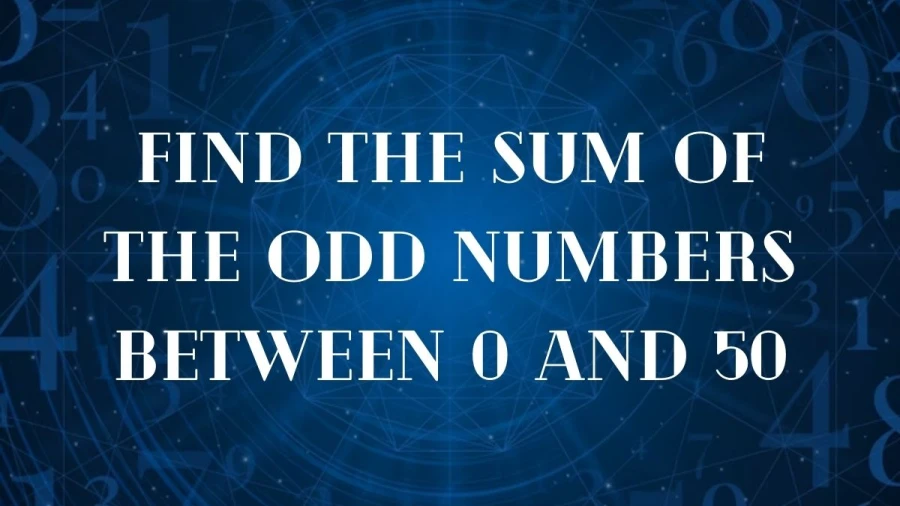If you happen to be viewing the article Find the Sum of the Odd numbers between 0 and 50 ? on the website Math Hello Kitty, there are a couple of convenient ways for you to navigate through the content. You have the option to simply scroll down and leisurely read each section at your own pace. Alternatively, if you’re in a rush or looking for specific information, you can swiftly click on the table of contents provided. This will instantly direct you to the exact section that contains the information you need most urgently.
Find the total of all the odd numbers from 0 to 50 in a snap with our straightforward calculator.
Find the Sum of the Odd numbers between 0 and 50
To find the sum of odd numbers between 0 and 50, you can use the formula for the sum of an arithmetic series:
S = (n/2) * (first term + last term)
In this case, since we’re summing odd numbers, the sequence is 1, 3, 5, 7, …, 49. We can see that this forms an arithmetic sequence with a common difference of 2.
The first term, a₁, is 1.The last term, aₙ, is 49.
The number of terms can be calculated using the formula for the nth term of an arithmetic sequence:
aₙ = a₁ + (n – 1) * d
49 = 1 + (n – 1) * 2
49 = 1 + 2n – 2
49 = 2n – 1
50 = 2n
n = 25
Now we have the number of terms (n) as 25. We can plug these values into the formula for the sum of an arithmetic series:
S = (n/2) * (a₁ + aₙ)
S = (25/2) * (1 + 49)
S = (25/2) * 50
S = (25 * 50)/2
S = 625
So, the sum of odd numbers between 0 and 50 is 625.
What is Arithmetic Progression?
Arithmetic progression (AP), also known as an arithmetic sequence, is a special type of sequence where the difference between consecutive terms remains constant. In simpler terms, imagine a ladder where each rung is spaced evenly apart. The distance between each rung represents the common difference in an AP.
Here are some key characteristics of an AP:
- Constant difference: Each term is obtained by adding (or subtracting) the same value, called the common difference (d), to the previous term.
- Formula for nth term: You can find any term (n th term) in the sequence using the formula a_n = a_1 + (n – 1)d, where a_1 is the first term and d is the common difference.
- Sum of an AP: The sum of all terms in a finite AP can be calculated using the formula S_n = n/2 (2a_1 + (n – 1)d), where n is the number of terms, a_1 is the first term, and d is the common difference.
Here are some examples of APs:
- 2, 5, 8, 11, 14, … (common difference = 3)
- 10, 7, 4, 1, -2, … (common difference = -3)
- 3, 6.3, 9.6, 12.9, 16.2, … (common difference = 3.3)
Arithmetic progressions have numerous applications in various fields, including:
- Finance: Calculating compound interest or future values of investments.
- Physics: Describing uniform motion with constant acceleration.
- Statistics: Analyzing frequency distributions of data.
- Computer science: Generating numerical sequences for algorithms.
Thank you so much for taking the time to read the article titled Find the Sum of the Odd numbers between 0 and 50 written by Math Hello Kitty. Your support means a lot to us! We are glad that you found this article useful. If you have any feedback or thoughts, we would love to hear from you. Don’t forget to leave a comment and review on our website to help introduce it to others. Once again, we sincerely appreciate your support and thank you for being a valued reader!
Source: Math Hello Kitty
Categories: Math

